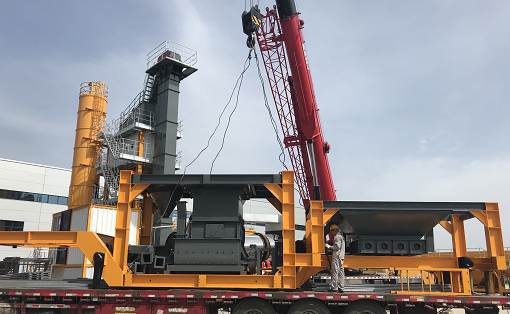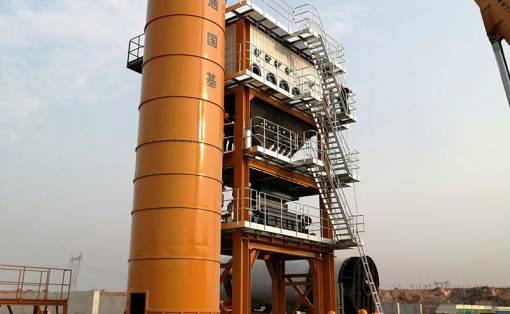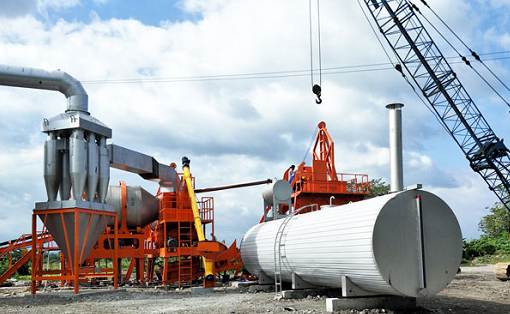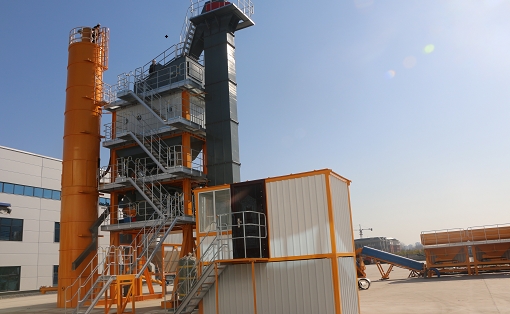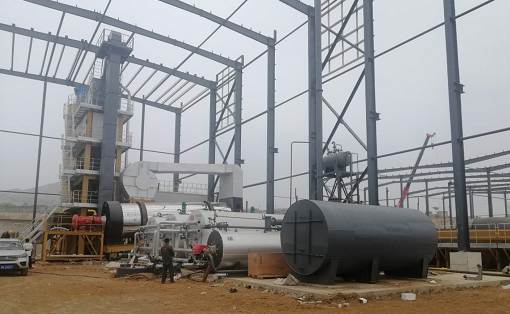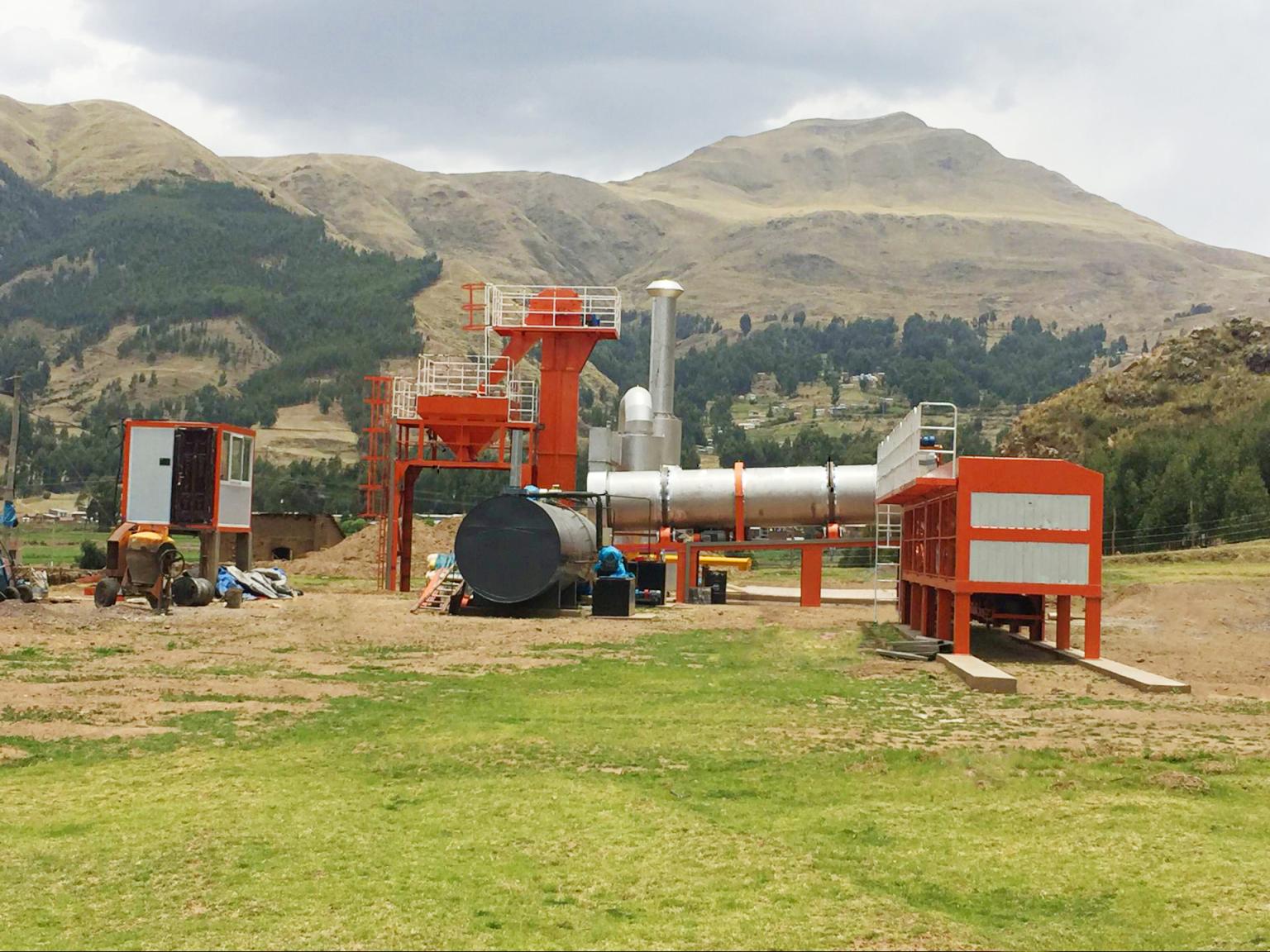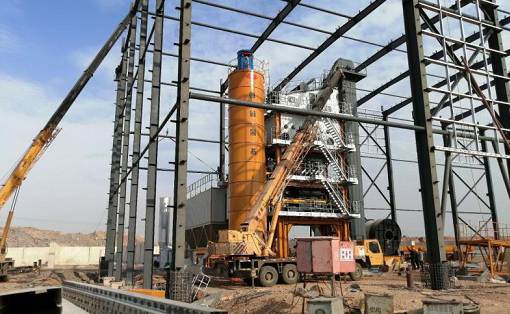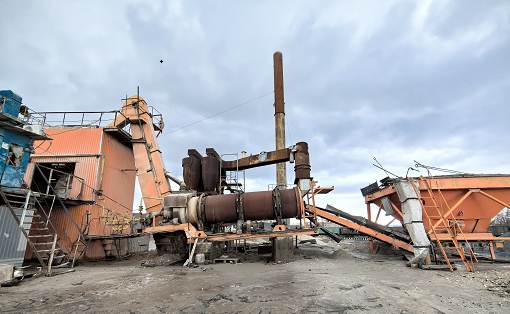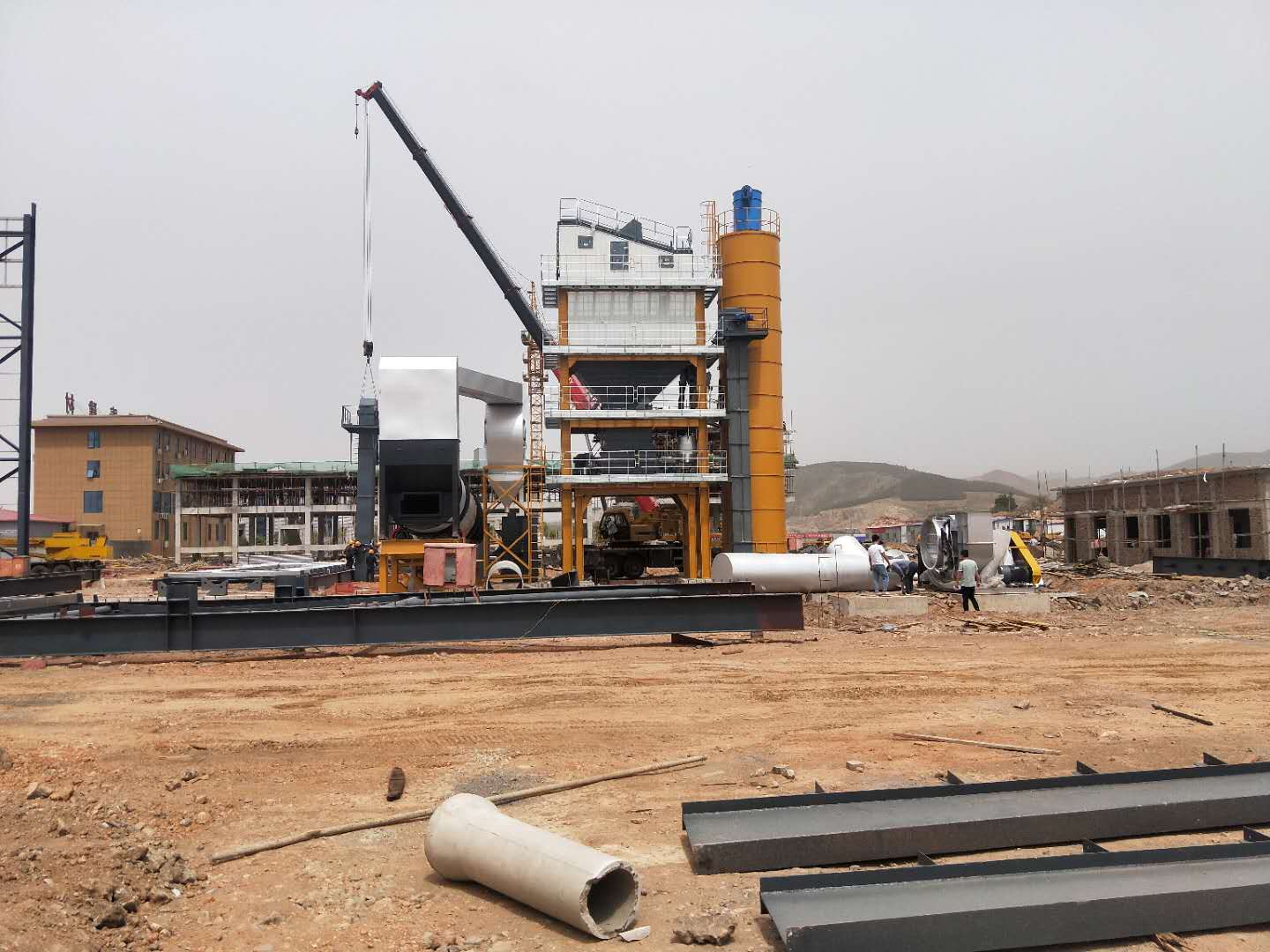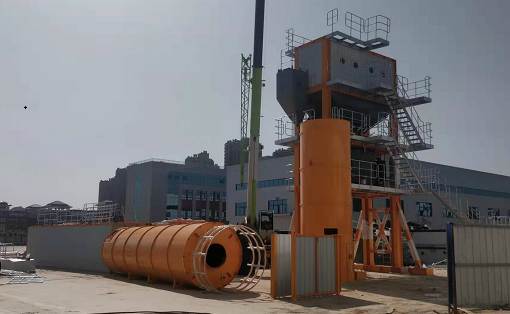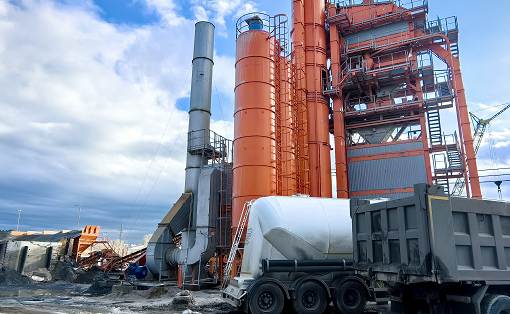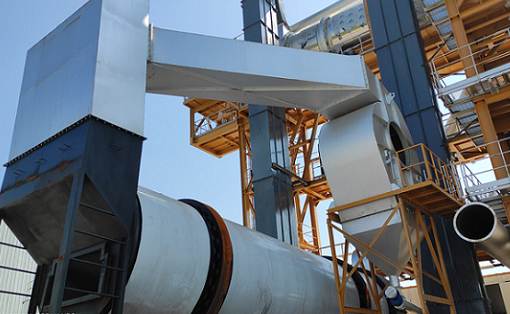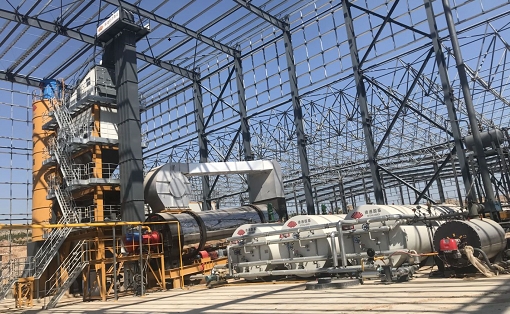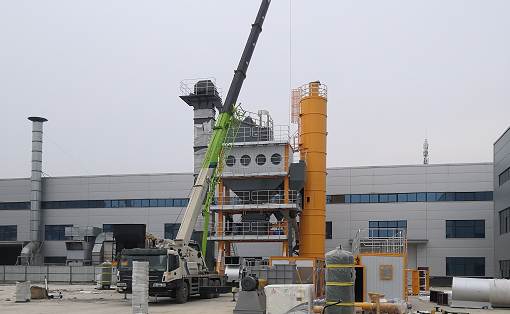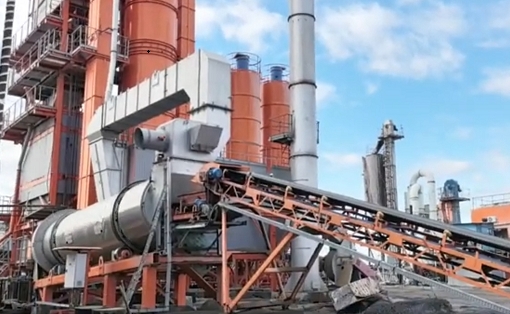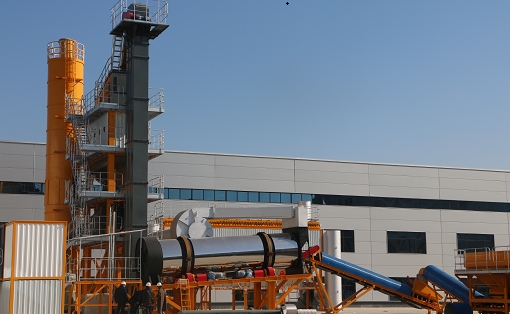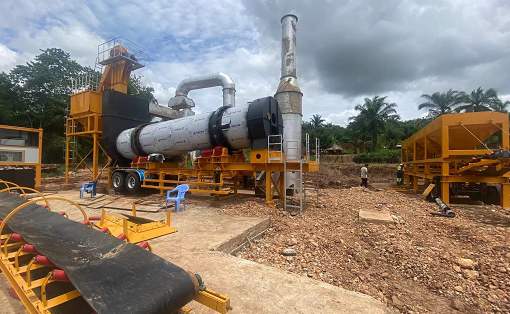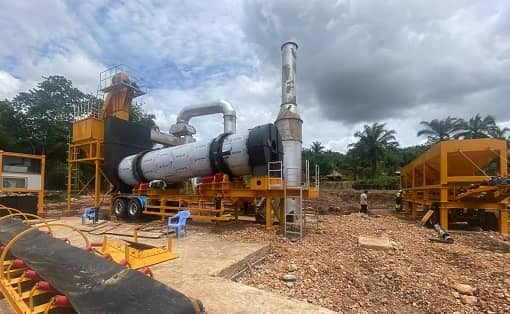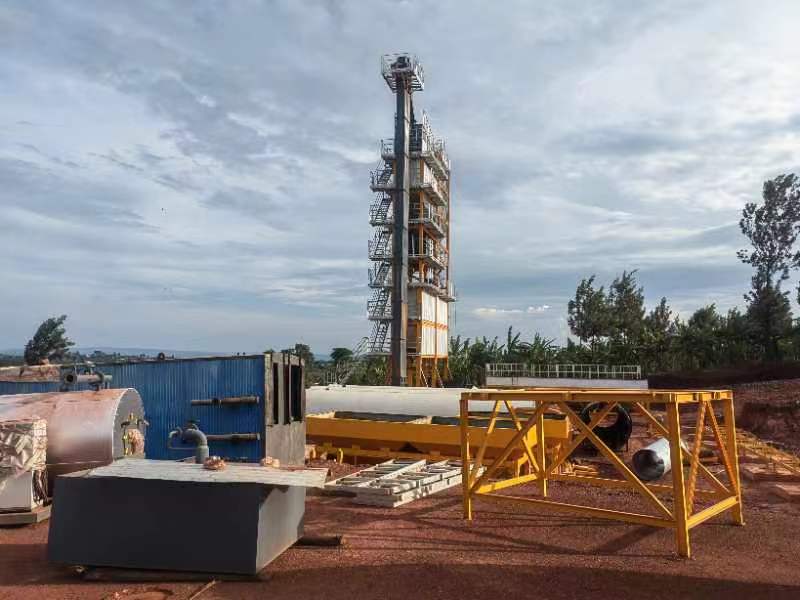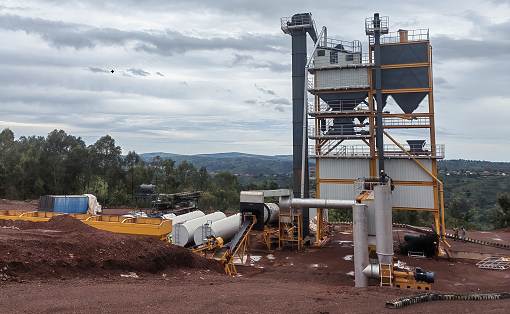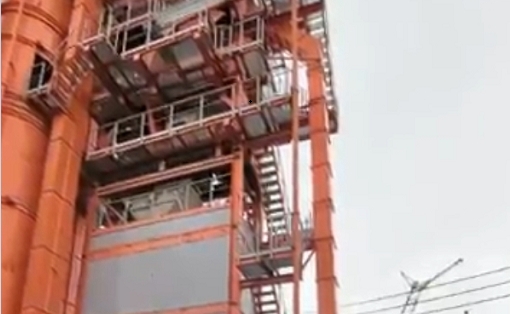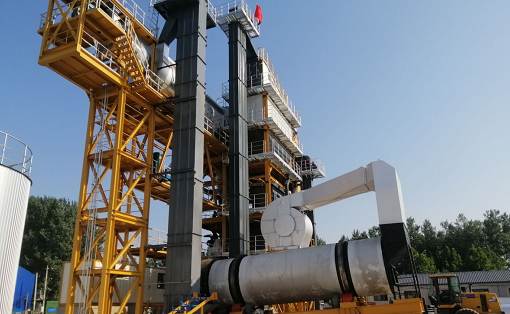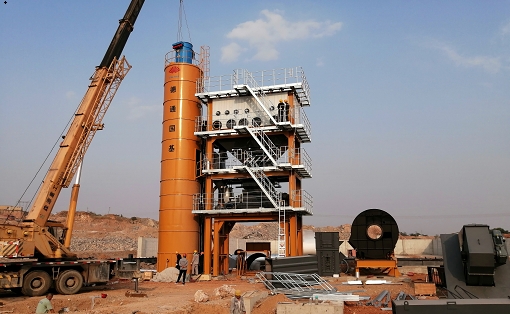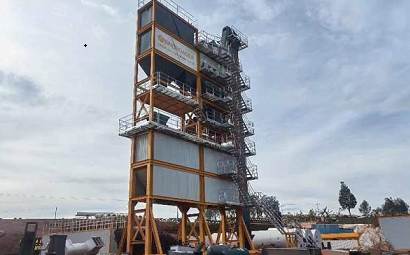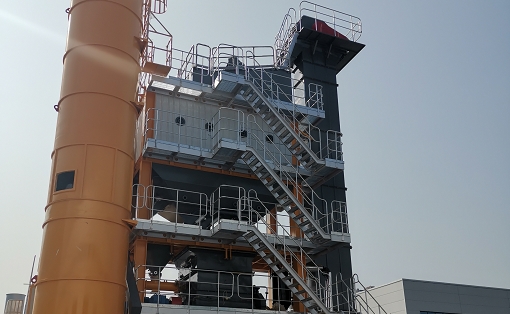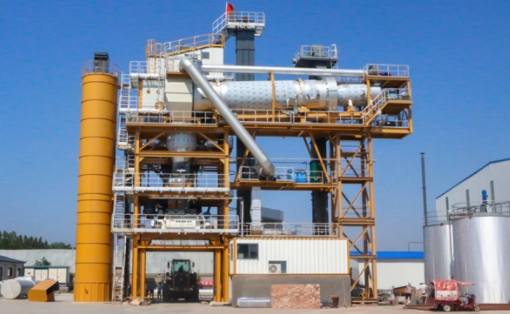Analysis on improving the production efficiency of asphalt mixing plant
At present, the production efficiency of asphalt mixing plants in my country’s asphalt construction is far lower than the theoretical efficiency at the time of design. The low efficiency of organic waste gas treatment will not only delay the construction process and cause a waste of resources, but also the quality of the construction will not be very good. guarantee. In the construction of asphalt pavement, the main reasons for the low production efficiency of the asphalt plant are insufficient supply of mixture, resulting in loss of continuity of construction, improper equipment parameter settings, excessive overflow and other problems. Effective measures must be taken to deal with these problems, and ultimately improve production efficiency and ensure construction quality.
At present, the production efficiency of asphalt mixing plants in my country’s asphalt construction is far lower than the theoretical efficiency at the time of design. The low efficiency of organic waste gas treatment will not only delay the construction process and cause a waste of resources, but also the quality of the construction will not be very good. guarantee. In the construction of asphalt pavement, the main reasons for the low production efficiency of the asphalt plant are insufficient supply of mixture, resulting in loss of continuity of construction, improper equipment parameter settings, excessive overflow and other problems. Effective measures must be taken to deal with these problems, and ultimately improve production efficiency and ensure construction quality.
1. Analysis of factors affecting construction quality
1.1 Low equipment production efficiency There are five main factors that cause low equipment production efficiency and unstable output:
First, the mix ratio of asphalt and concrete is inappropriate. The mix ratio of the asphalt mixture is used throughout the entire construction, and the scientific guidance of the mix ratio and production mix ratio must be fully utilized. Once the mix ratio is unreasonable, it will be extremely easy to affect the quality of construction, and ultimately affect the service life of the pavement when it is put into use. It will also increase the project cost accordingly for the construction company, which is not conducive to the company’s cost control and economic benefits. This requires that the mixing plant should try to prevent material overflow and material waiting during use, so as to improve production efficiency and thereby reduce costs.
Second, the selection of sand and stone is unreasonable. There are corresponding grading ranges for the specifications and models of sand and stone. However, due to insufficient strictness during procurement and verification, some gradings seriously exceeded the range, resulting in a large amount of material waste. This phenomenon not only results in low production efficiency and insufficient output, but also wastes resources and increases the cost of the enterprise.
Third, the water content of sand and gravel exceeds the standard. The drying barrel of the asphalt mixing plant and its production capacity and model are matched with each other. Once the moisture content of materials such as sand and gravel exceeds a certain standard, the drying capacity will be reduced accordingly. As a result, the amount of sand and gravel at the set temperature is greatly reduced per unit time, and the output is subsequently reduced.
Fourth, the combustion efficiency of gas burners is low. The temperature of the corresponding stone cannot be kept stable due to low combustion efficiency. Therefore, the heating capacity of the drying barrel is reduced, and the discharge speed is slowed down, which ultimately affects the production efficiency.
Fifth, the equipment operating parameters are improperly set. In terms of parameter setting issues, the main problems are improper setting of the time for dry and wet mixing, and improper adjustment of the opening and closing time of the bucket door. Under normal circumstances, each mixing production cycle is 45-60S. Only under this setting can the final production capacity reach the expected value. Taking the 2000 type asphalt plant as an example, when the mixing time is forty-five seconds, the theoretical output per hour should reach 160t/h; the actual mixing time is fifty-five seconds, and the actual output per hour But it’s only 130t/h. It can be seen that if you want to increase the output, you should minimize the mixing cycle time while ensuring that the quality meets the requirements.
1.2 The temperature of the discharge material is unstable. The temperature requirements in the production process of asphalt concrete are very strict. If the temperature is too high or too low, it will affect the quality of the asphalt. If the temperature is too high, the asphalt will be easily scorched. The asphalt produced under such conditions is called paste and is a waste material without any use value. If the temperature is too low, it will easily affect the adhesion. The adhesion of asphalt and sand and gravel materials will not be strong and uneven, and they cannot be used. Both of the above situations will cause a lot of losses and waste, with the average cost per ton being around 400. In order to reduce the waste of materials and increase costs, this requires strict temperature control during the production process, careful observation and measurement, to ensure that the quality of the materials is up to standard.
1.3 The oil-stone ratio is unstable. The oil-stone ratio mainly refers to the mass ratio of fillers such as asphalt and sand in asphalt concrete. It is an important indicator to maintain the quality of asphalt concrete. There are two main reasons for the unstable oil-stone ratio: the content of soil, dust, etc. in the sand and gravel materials exceeds the standard. Since the content of soil, dust, etc. seriously exceeds the standard, it cannot be completely removed even after dust removal treatment. Therefore, when the gravel is mixed with asphalt, it is difficult to form when there is too little asphalt adhered to the surface and the asphalt is rolled. Second, the metering system fails. During production, the zero points of the asphalt weighing scale and mineral powder weighing scale systems drift, which leads to measurement errors. Especially once an error occurs in the asphalt measuring scale, it will have a greater impact on the oil-stone ratio. This requires frequent calibration of the measurement system during production to ensure measurement accuracy.
2 Common fault analysis
2.1 Failure of the cold material feeding device If the variable speed belt conveyor stops, there may be two reasons. One is a motor failure, and the other is that the belt is stuck due to foreign matter and cannot continue to run. If it is a motor problem, you should first check the motor’s control inverter during inspection to see if the circuit status is normal or if there is a circuit break. It is also possible that the belt is not tight enough. If it is confirmed to be a foreign matter problem, it needs to be cleaned as soon as possible.
2.2 Mixer failure When using the mixer, the fault can be identified by the sound. If the sound is abnormal, it may be due to the overload operation of the mixer, which in turn causes the fixed support to be dislocated. Or the fixed bearing is damaged. When encountering the above situations, it is necessary to reset, fix or replace the bearing with a new one. Especially the mixer’s arms, blades, and internal guards. When these important parts are found to be seriously damaged or even fallen off, they need to be replaced directly. If the temperature of the discharging material is abnormal, the temperature sensor needs to be checked.
2.3 Burner failure It is extremely easy for burner problems to occur during the operation of the mixing station. When heating is required, the burner cannot ignite normally. When encountering this situation, first check the inside of the operating room to see if all the conditions supporting ignition are met, such as the status of the induced draft fan, blower, etc., whether the position is correct, and whether the switch is turned on, etc. If all the conditions for normal ignition have been met, but the burner still does not operate normally, the next step needs to be checked. Check whether the initial ignition has been carried out, whether there is enough fuel and whether the passage is clear. Check the ignition motor of the burner, mainly checking the high-voltage package, electrodes and other issues. If all the above are normal, the fuel pump needs to be checked.
2.4 Abnormal negative pressure Negative pressure mainly refers to the atmospheric pressure in the drying drum. The positive pressure inside the drum mainly comes from the blower, while the negative pressure mainly comes from the induced draft fan. If the negative pressure is too large, it will cause too much cold air inside the drum to take away heat energy, and the amount of material will be greatly increased, so the negative pressure must be strictly controlled.
3 Measures to Improve Production Efficiency
3.1 Maintenance of Mixing Plant To improve the production efficiency of asphalt mixing station, we must first improve the maintenance of the mixing station to ensure the normal operation of the mixing station and maximize the output and quality. The asphalt mixing plant is one of the equipment that is prone to failure during construction. Daily equipment maintenance should be paid attention to to improve equipment utilization and production efficiency.
The first is the maintenance of the tank. During the operation of the mixing plant, the tank is seriously worn. During daily maintenance, if it is found that the tank liner, blade stirring arm, and material door seal are worn, if the wear is minor, timely adjustment is required, and if the wear is serious, it needs to be replaced directly. It must be cleaned promptly after each use to prevent concrete from solidifying and affecting normal operation. All parts of the tank must be inspected regularly to ensure that all aspects are normal and safe before operation can begin.
Secondly, the maintenance and adjustment of the winch motor. The braking torque of the mixer is controlled and adjusted by the large nut on the back seat of the motor, so pay special attention to the use of the nut when using it, and operate according to the corresponding procedures according to the actual situation. Then, maintenance of the loading rack and bracket. Pay attention to the maintenance of the contact parts between the loading rack and the roller. Grease should be applied frequently inside and outside the groove. Firstly, it can reduce the resistance during operation and ensure the normal speed of feeding. Secondly, proper lubrication can effectively reduce wear. Thereby reducing costs. If the bracket is found to be deformed, timely processing must be carried out to avoid safety accidents. Maintenance of travel limiter. The limiters of the mixing station are divided into limit limits, upper and lower limits, etc. In daily maintenance, timely inspection must be paid attention to, including the sensitivity and reliability of the switch, as well as problems such as circuits and components.
3.2 Improve the overall quality of operators To improve the production efficiency of asphalt mixing plants, in addition to ensuring the normal operation of the asphalt plants, it is also necessary to improve the overall quality of operators to reduce the impact of human factors on production efficiency. Operators need regular training to improve their professionalism and practical experience. At the same time, they must undergo strict assessments before taking up the job, and only start operations after meeting the requirements. At the same time, ideological education and safety training of personnel are carried out to improve the safety awareness and sense of responsibility of construction personnel, so that problems can be discovered and solved in a timely manner.
4 Conclusion
In summary, there are two main factors that cause low production efficiency of asphalt mixing plants, namely human factors and equipment factors. In response to these two aspects of the problem, it is necessary to continuously improve the comprehensive quality of the staff to ensure the correctness and effectiveness of the operation; attention should be paid to daily maintenance of the equipment, and frequent inspections should be carried out during use to ensure the safety and effectiveness of the work. Quality of construction. Only by starting from the above two aspects can we ultimately improve production efficiency.


